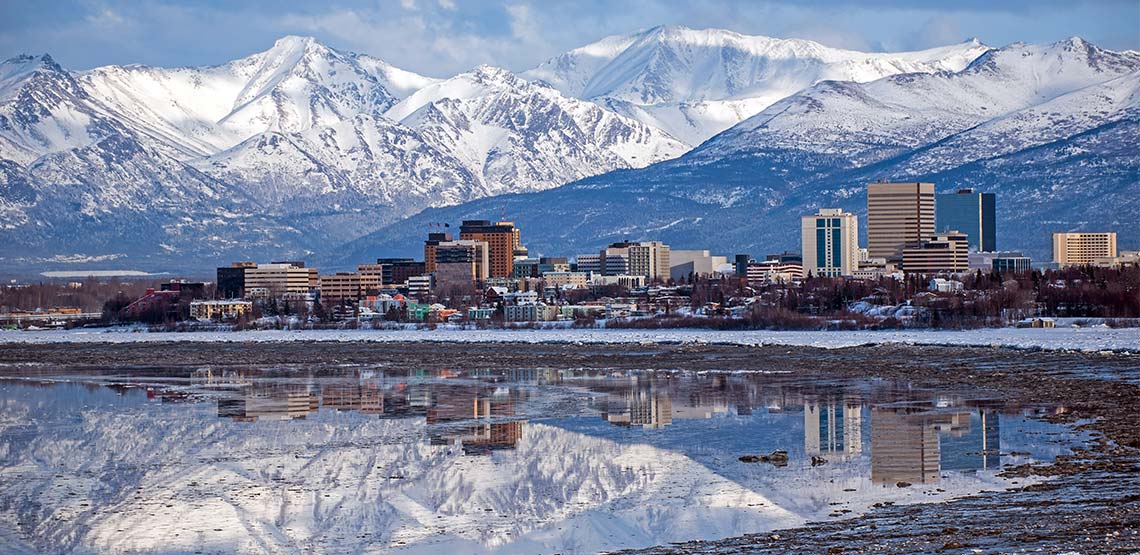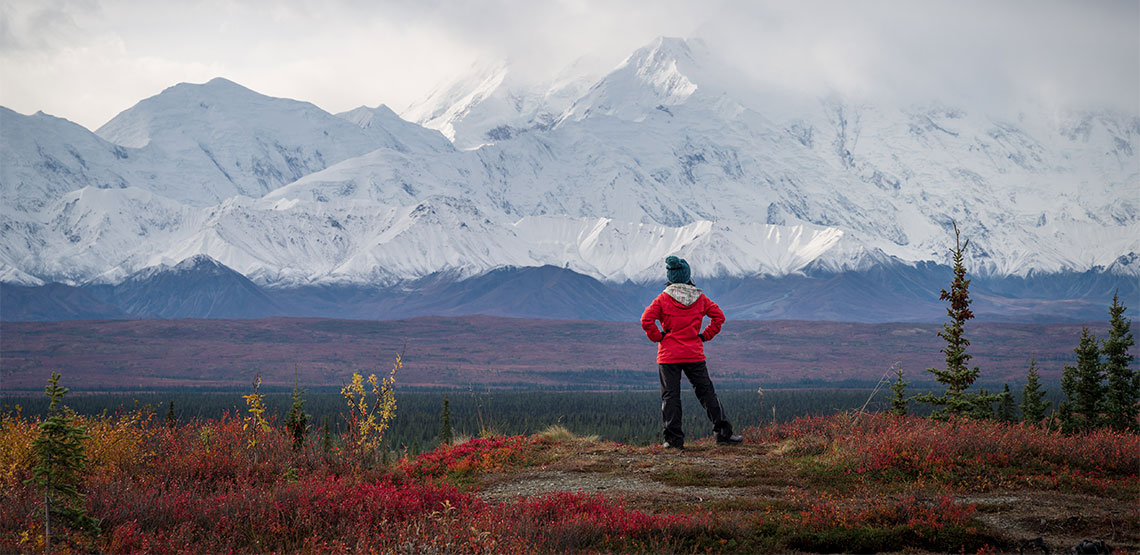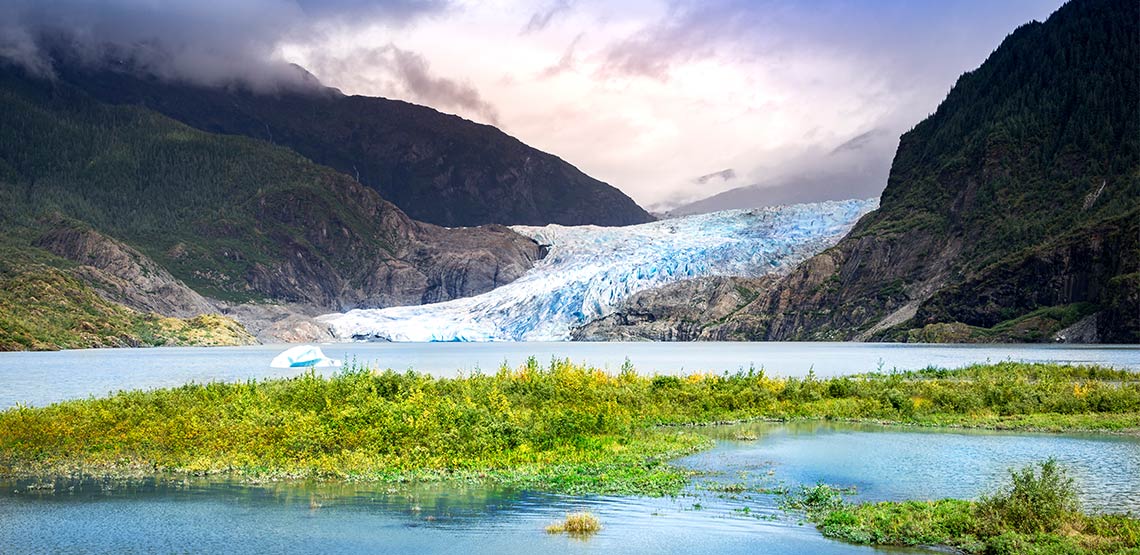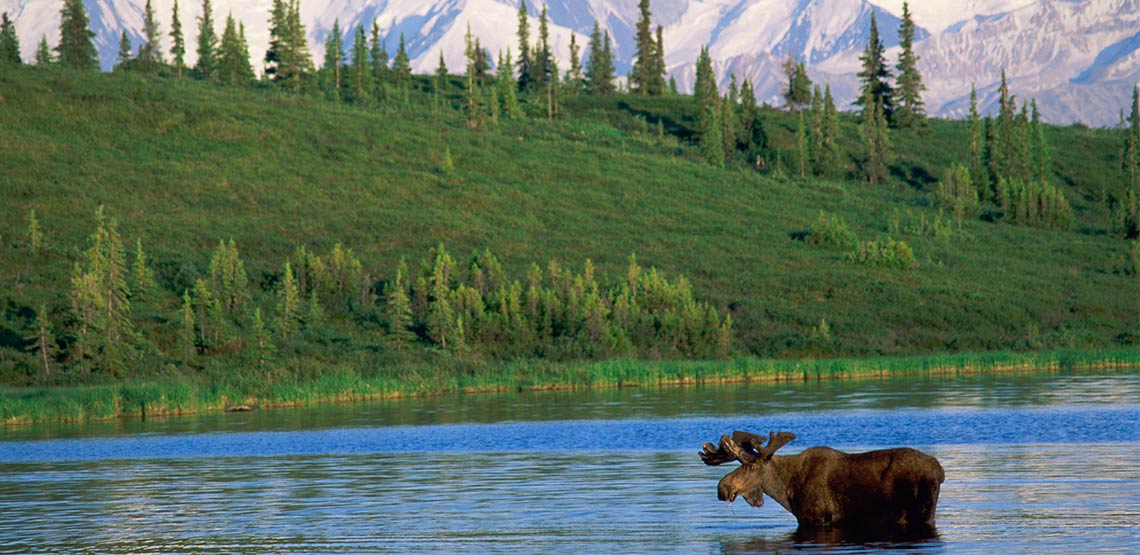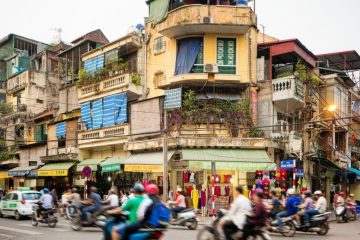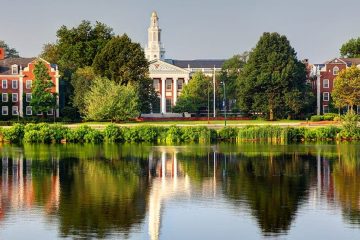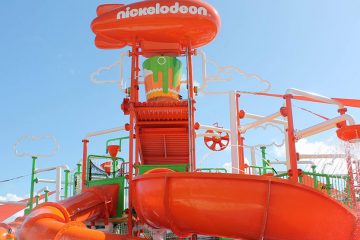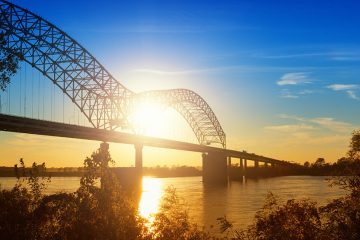The Last Frontier: How to Plan a Trip to Alaska
Venture Into the Wilds of Alaska
Known as the Last Frontier, Alaska is famous for its undisturbed wilderness full of wildlife and breathtaking scenery. Visitors flock to the largest US state every year to witness the natural beauty and splendor of this magnificent and diverse land. In fact, Alaska tourism has increased by 15% over the last two years, with more than 2 million visitors from 2017 to 2018.
Due to its large size, Alaska is divided into five regions: Arctic, Interior, Southwest, Southcentral, and Inside Passage. And with over 663,000 square miles of cities, towns, fishing villages, parks, preserves and rugged wilderness, it’s not exactly easy to narrow down what to bring, see or do on an Alaska trip. But with a little guidance and planning, an Alaska vacation could be the experience of a lifetime.
Weather
Expect it to be cold at least 50% of the time you’re in Alaska, even in the summer, as temperatures drop quickly at night due to the state’s northern latitude.
Summer
From June to August, the days are long and warm, averaging in the mid-50s to low-70s during the day and the 40s and 50s at night for the inland regions. The arctic and coastal regions in Alaska tend to get cooler, even in the summer months, with temperatures in the mid-20s to 40s during the day and the low-20s to 30s at night. However, Fairbanks can get into the 80s and 90s during the day on occasion.
Alaska’s rainy season also happens to fall during the summer, especially in the later months of July through September where the chance of rain is around 50% daily.
Winter
Winters are cold, as you might imagine, getting into the freezing range and below from October through March. To give you an idea of the temperatures, mountainous regions near the Northern Interior have had record lows reaching to -79º in the past, and it’s not uncommon for inland temperatures to hover around 20º F with snow on the ground from October until April.
Best Time to Visit
Figuring out the best time to visit Alaska really depends on what you want to see and do.
Summer
In general, summer is the best time of year to go due to warmer weather and an abundance of daylight.
Peak season starts in June and goes through August and is when prices are the highest for flights, lodging and car rentals. Cruising season starts and ends a little later, running from May to September.
May tends to have the best wildlife viewing if you’re visiting the backcountry on a tour or safari, June has the longest days, and July has the warmest weather and the best opportunities for whale watching.
Shoulder Season
Visiting during shoulder season, namely April, May or September, will get you the best prices if you want to enjoy warmer weather; however, winter has its own draws as well.
Winter
Since Alaska has almost constant snowfall in the winter (most places average around 75 inches during the season), it’s a great place to come for winter sports like skiing and snowboarding. Winter is also when you’re able to see the Northern Lights, although they’re generally visible from about August to April.
Cost
Alaska is an expensive destination to visit due to its location, terrain and weather. However, when tallying up costs for an Alaska vacation, transportation comes in as the biggest expense.
Flights
Airfare varies wildly throughout the year, and costs differ depending on the season, your point of origin, and which airport you fly into.
The west coast of the US and Canada tend to enjoy the cheapest flights to Alaska. A flight from Vancouver to Fairbanks costs between $400 and $600 per person round-trip during peak season, while Seattle to Anchorage might cost between $150 and $300 during peak season. On the other hand, Alaska travel from the east coast of the US and Canada may cost between $700 and $1,000 during peak season.
Car Rentals
On top of that, Alaska has some of the most expensive car rental costs in the US, especially during the summer. Even a typical economy car costs, at minimum, around $50 per day or more, in addition to taxes and fees that sometimes equal the daily rate.
Train
Alternately, if you’re going to visit Alaska solo or just want to see more of the scenery worry-free, you could take the train. There are five different train routes serviced by the Alaska Railroad, some of which provide luxury train experiences. However, a one-way ride from Anchorage to Fairbanks will cost around $250 per person.
Lodging and Meals
When it comes to lodging and meals, you have a little more flexibility. As is the case almost anywhere, there are booking options for every price point, whether you’re looking for camping spots ($10 to $25 per night), hostels ($40 to $80 per night), standard hotels ($80 to $200 per night), or luxury lodges ($200 and up per night).
If you plan on staying in a big city like Anchorage or Fairbanks, you’ll find fast food options like anywhere else in the US, in addition to cafes and fine dining establishments. However, if you want to sample the local seafood, expect to pay around $25 or more for a dinner entree.
Places to Go and Things to Do
If you visit Alaska, you’ll likely either stick to big city Alaska destinations such as Fairbanks, Anchorage, or Juneau, or venture out into the wilderness to national parks, state parks, or state preserves for organized tours, camping, or winter sports. Most visitors come for the state’s stunning natural beauty, which is reflected in the popularity of outdoor activities as some of the top things to do in Alaska.
Wildlife Viewing
You can view wildlife of all sorts both by land and sea in Alaska. Wildlife tours might take you through the backcountry with a guide as you camp out and observe large game like moose and bear, or you can take a whale watching cruise off of Juneau through the Lynn Canal.
Cruises
In fact, both the enormity of Alaska and the fact that it’s a peninsula make cruising a popular choice for sightseeing. Most major cruise lines have itineraries to Alaska during the summer months, with shore excursions in major cities or to popular tourist attractions.
Local cruises are an option too if you want to combine both land and sea tours, which will allow you to get even closer to glaciers and wildlife with additional opportunities for boating, fishing, kayaking, and hiking among more remote locations.
Flightseeing
Because so much of Alaska is remote and inaccessible to most people (only 30% of roads are paved), many resort to flightseeing to get a sense of the beauty and grandeur of the 49th state. Most tours start in Anchorage or Juneau and fly over sites like Mount Denali, Knik and Colony Glacier, and the Chugach Mountains among other natural wonders.
Skiing
Similarly, air taxis are available for charter if you’re a backcountry skier, dropping you into remote locations where you’ll have the powder all to yourself. Or if you don’t have the money to drop on one of these private skiing experiences, there are plenty of ski resorts to try, with trails of varying difficulty and plenty of attractive après ski amenities.
Fairbanks
If you want to see the Northern Lights in Alaska, you can’t go wrong with Fairbanks. It’s an easy choice for Aurora Borealis seekers since it’s one of the more populous northern cities with an easily accessible airport.
But aside from the Northern Lights, Fairbanks has become an art and cultural destination as well for its many museums, galleries and theaters — the Fountainhead Antique Auto Museum and University of Alaska Museum of the North are two of the top attractions in the city.
Fairbanks also has a Summer Arts Festival and plays hosts to native cultural events such as the World Eskimo Indian Olympics and the Open North American Championships — the annual dog sled race of the Alaska Dog Mushers Association.
Anchorage
Because the majority of the city is a state park, there are lots of things to do outdoors in Anchorage. If it’s wildlife you’re after, the Alaska Wildlife Conservation Center is home to many local animals such as bears, reindeer, wolves and bison. They even offer a special wildlife encounter program where you can hand-feed a bull moose. You can also visit the Alaska Zoo, which houses 77 animals across 25 acres of park and is just outside the main part of the city.
If you’re looking for a more active outdoors experience, a visit to Portage Glacier offers a uniquely Alaskan experience. Get up close and personal to watch the ice break or “calve” off the glacier into Portage Lake via a boat cruise, or hike to a viewing spot on a guided tour.
Juneau
Alaska’s capital city, Juneau, also has a myriad of outdoor activities to do. Boat tours cruise along the Tracy Arm Fjord where you’ll see ice, glaciers, and wildlife like mountain goats, harbor seals, and many species of birds. Another popular experience in Juneau starts at Mendenhall Glacier Visitor Center where a tour will take you out onto the actual glacier. Additionally, you can hike from the Visitor Center up to Nugget Falls, the 377-foot glacier-fed waterfall off of Mendenhall Lake.
Additionally, you’ll find music and native culture festivals during the summer in Juneau, along with Alaska’s largest professional performing arts theater, Perseverance Theatre. There are also a number of craft breweries and distilleries that have popped up in the city in recent years, some of which offer tours and tasting rooms for visitors.
National and State Parks and Wildlife Refuges
Alaska’s landscape and wilderness are unparalleled, especially within the United States, and as such, the state is home to a number of national and state parks, along with wildlife refuges. In fact, Alaska has the second largest number of national parks in the United States with eight total, along with 95 state parks and 16 wildlife refuges.
One of Alaska’s most famous and popular national parks, Denali National Park and Preserve, is home to the tallest peak in the US, Mt. Denali, and over 6 million acres of protected wild land. Glacier Bay National Park also ranks as a top place to go in Alaska, attracting over 640,000 visitors each year. Both Chugach and Wood-Tikchik State Parks are also local and tourist-favorites, with beautiful natural attractions like snowy peaks, pristine lakes, and rushing falls.
Safety Concerns
As with anywhere you travel, your own safety should be a top priority on your Alaska vacation. Since so many of the activities and sites are outdoors and reasonably strenuous, safety concerns need to be considered and addressed.
Wildlife
When viewing wildlife or camping in the backcountry, precautions are necessary to avoid bear encounters. Campers and hikers should carry bear spray, and any food brought to a campsite needs to go in a bear-resistant food container. Also, it should go without saying, but it’s always a good reminder to keep your distance from animals spotted in the wild. Never approach a wild animal, especially a bear, or try to feed them or otherwise interact in a way that may provoke them.
There are plenty of things to do in Hanoi to keep you entertained, from delicious street food, to fascinating museums to bustling shops.
Ice and Snow
If you plan on hiking glaciers, ice climbing, or doing any other activity near ice or snow, be sure to have the proper safety equipment with you. Beware of avalanches in mountainous areas, hidden crevasses on snow-packed glaciers, and slippery ice and snow almost anywhere you go, especially in the winter.
Plus, the icy-cold conditions around Alaska also pose a safety concern for exposure, especially if you’re hiking or camping without a guide. Know the signs and symptoms of hypothermia, frostbite, and trench foot and how to eliminate your risk or get treatment if it becomes necessary.
Cellphone Service
It’s also important to bear in mind that cellphone service outside of the major cities will be spotty or nonexistent in some areas. Make sure you have backup paper maps if you’re renting a car or hiking in the backcountry, or build in stops where you can keep in touch with family members or call for help if necessary. Campers should also take supplies such as personal locator beacons (PLB) or satellite messengers in case of emergency.
How to Prepare
Packing for your Alaska vacation will depend on what time of year you go as well as the activities you plan on doing.
Gear
If you’re going to camp, you’ll obviously need a pack with adequate survival supplies, bug spray, a tent, and a sleeping bag. Skiers and snowboarders should bring their own equipment, unless you have the money to buy everything when you get there or rent it at a lodge. And if you’re going glacier hiking or anywhere else with a lot of ice, you’ll need crampons for your shoes to keep from slipping and falling.
Clothing
For clothing, if you’re planning for peak season in the summer, it’s best to pack layers since days are hot and nights are cold. For daytime activities in the summer, pack shorts and t-shirts along with comfortable walking shoes. For nights and during the winter (or if visiting the arctic part of the state), hiking boots, a winter coat, waterproof clothing, and long underwear are all essentials for a trip to Alaska.
Guidebooks
Additionally, if you plan on driving through Alaska, you may want to consider picking up a guidebook ahead of time, such as The Milepost, which is a well-known guide to the roads, lodgings, recreation, sightseeing attractions, and services within the state.

